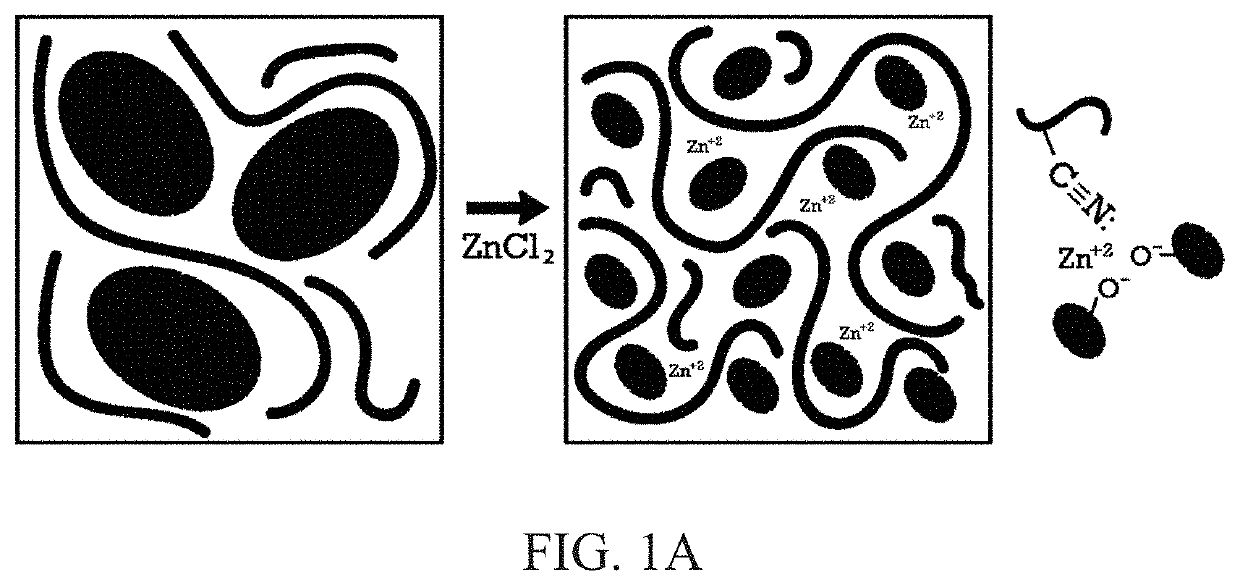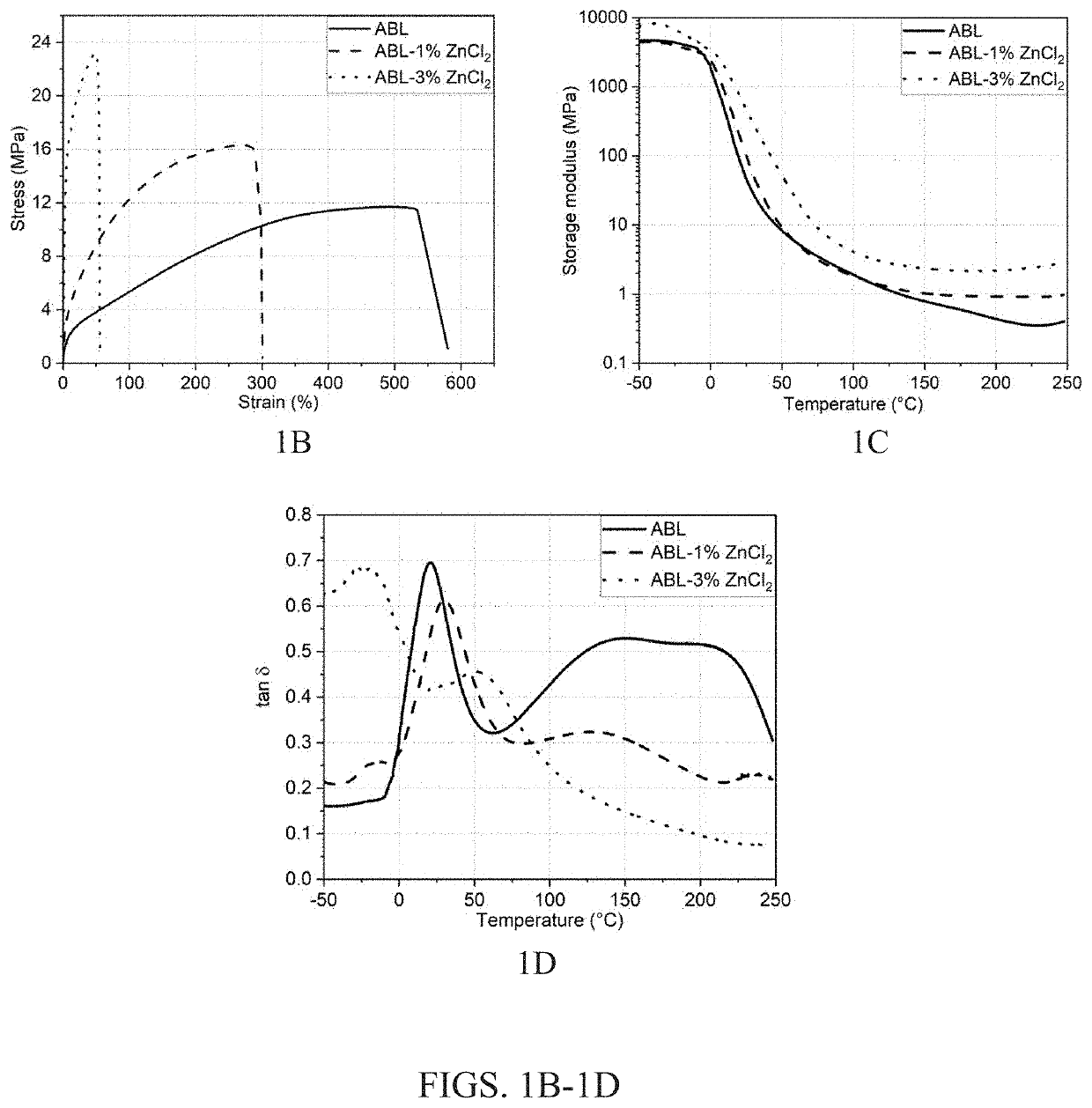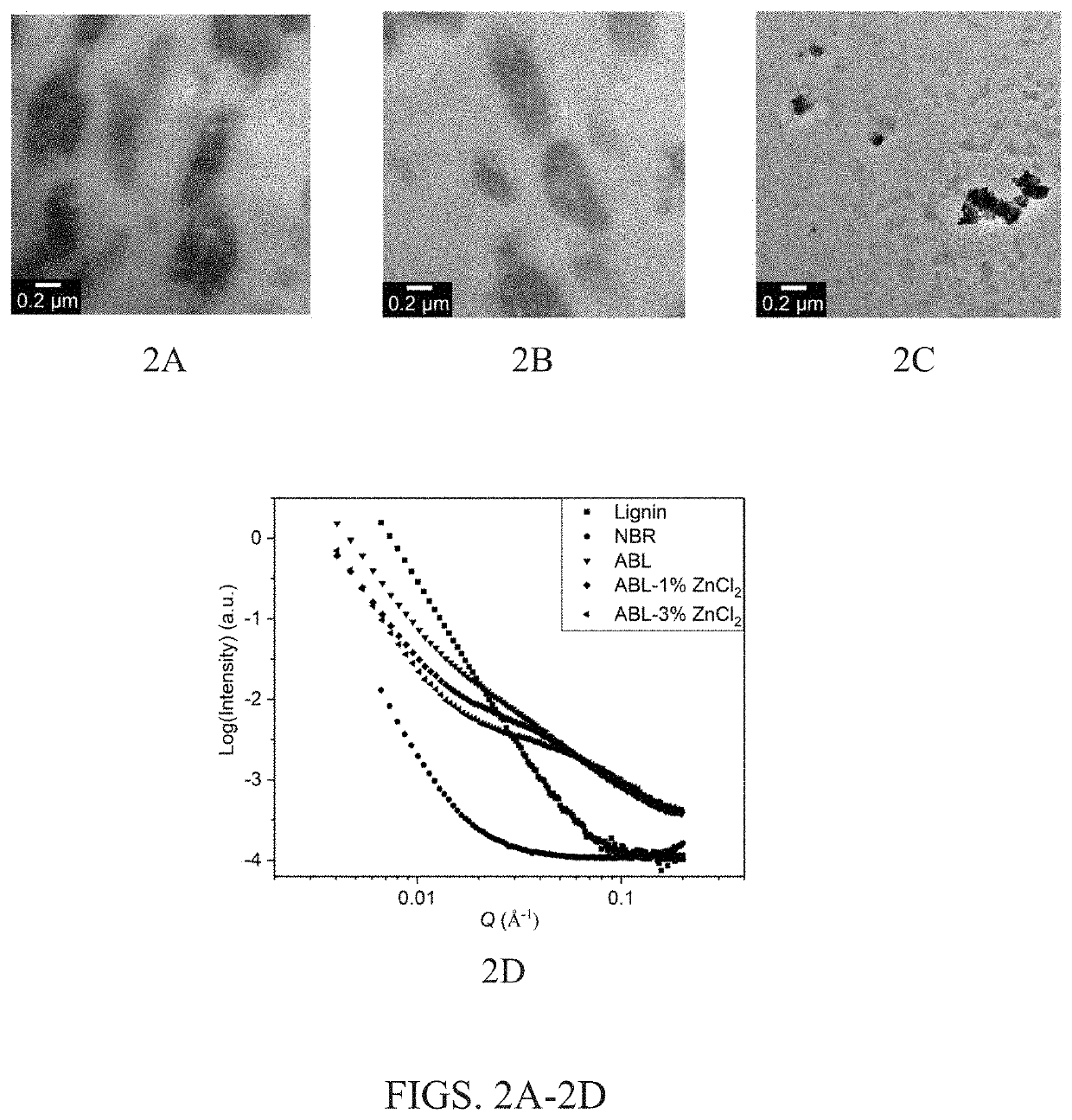High strength lignin-acrylonitrile polymer blend materials
a polymer blend and high-silica technology, applied in the field of polymer blend compositions, can solve the problems of inability to improve the mechanical properties of the binary blend of hardwood lignin and nbr, and inability to achieve significant reduction in the size of the hardwood lignin domain, and achieves high strength, and moderate or high elasticity.
- Summary
- Abstract
- Description
- Claims
- Application Information
AI Technical Summary
Benefits of technology
Problems solved by technology
Method used
Image
Examples
example 1
[0068]Effect of Zinc Ions on Lignin-NBR Polymer Blends
[0069]Zinc cations (Zn+2) can link nitrile groups of NBR with aliphatic and phenolic hydroxy groups and ether linkages of lignin, thereby aiding interfacial crosslinking between NBR and lignin and tailoring ABL morphology and performance. Without being bound by theory, it is herein hypothesized that such favorable electrostatic interactions promote a reduction in the size of lignin domains in the NBR matrix, which leads to an increase in the interfacial area between lignin and NBR phases. FIG. 1A is a drawing schematic depicting structural changes occurring in a NBR-lignin (ABL) polymer blend composition caused by compounding with ZnCl2. The image on the right shows that zinc cations (Zn+2) can link nitrile groups of NBR with anions from phenolic hydroxyl groups of lignin to aid interfacial crosslinking between NBR and lignin.
[0070]Combining solvent fractionated, melt-stable sinapyl alcohol-rich (SA-rich) lignin with a commodity ...
PUM
| Property | Measurement | Unit |
|---|---|---|
| size | aaaaa | aaaaa |
| elongation at break | aaaaa | aaaaa |
| size | aaaaa | aaaaa |
Abstract
Description
Claims
Application Information
 Login to View More
Login to View More - R&D
- Intellectual Property
- Life Sciences
- Materials
- Tech Scout
- Unparalleled Data Quality
- Higher Quality Content
- 60% Fewer Hallucinations
Browse by: Latest US Patents, China's latest patents, Technical Efficacy Thesaurus, Application Domain, Technology Topic, Popular Technical Reports.
© 2025 PatSnap. All rights reserved.Legal|Privacy policy|Modern Slavery Act Transparency Statement|Sitemap|About US| Contact US: help@patsnap.com



